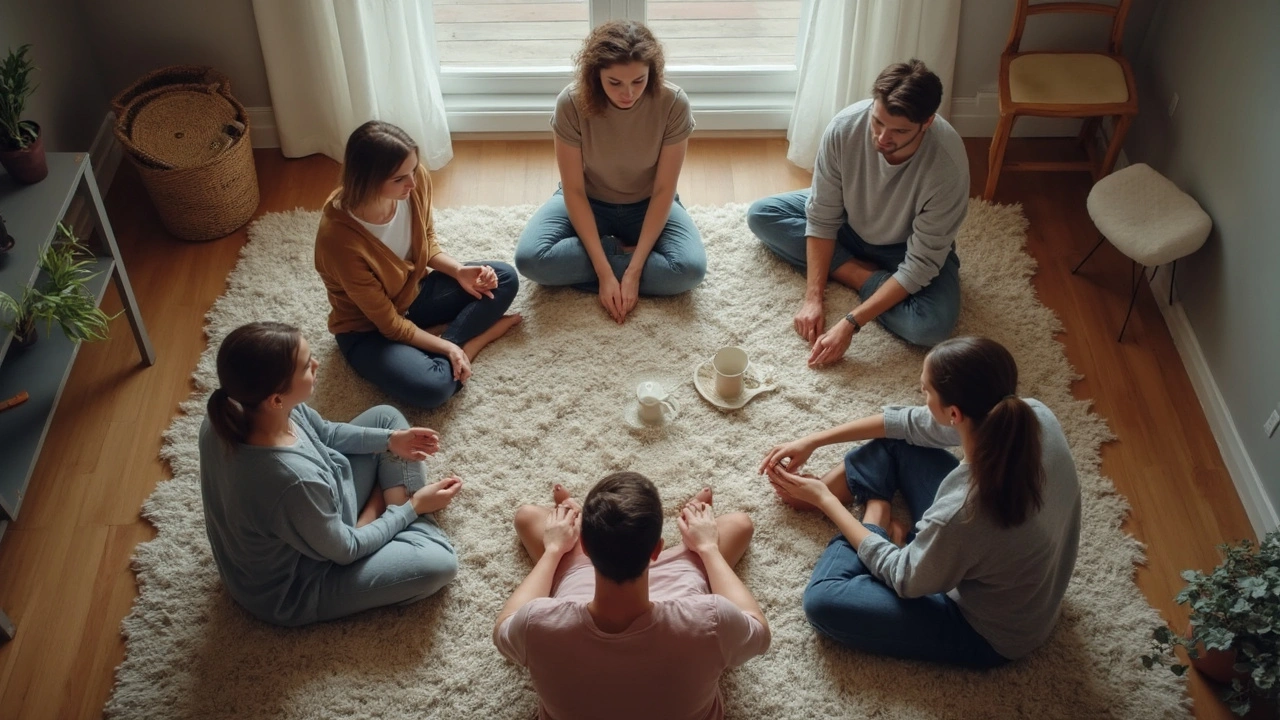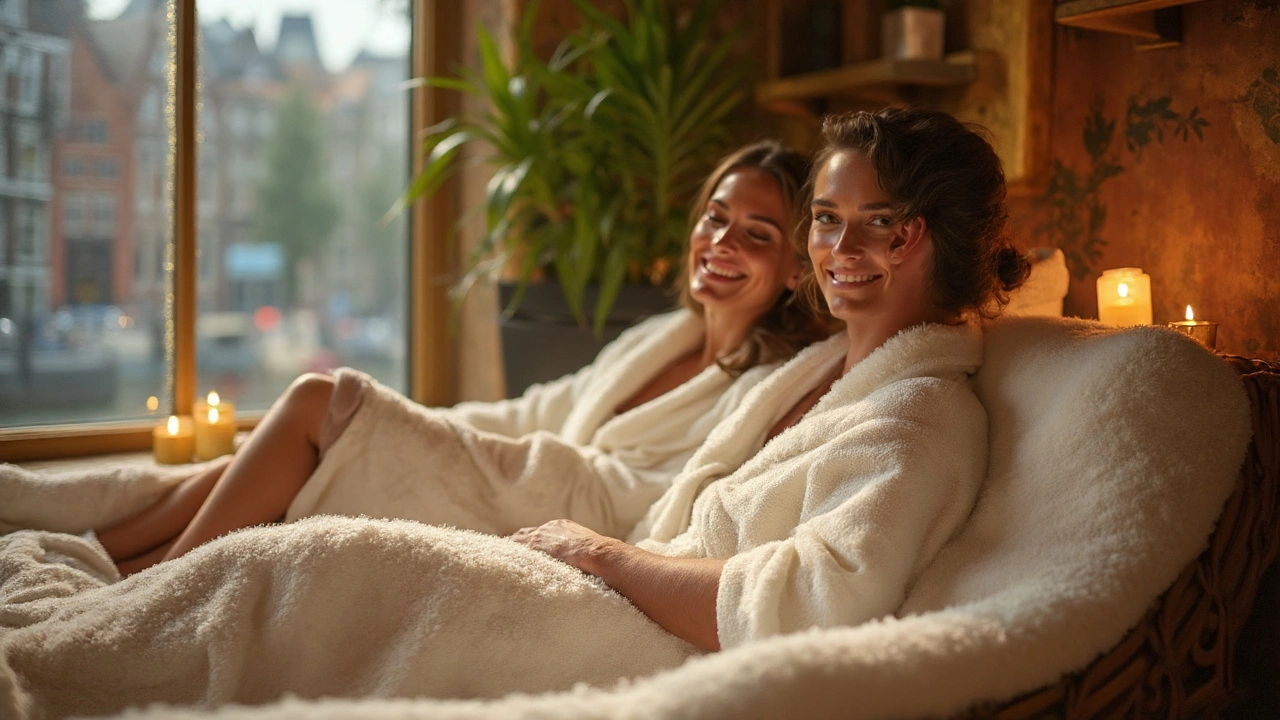Foot Massage Benefits: Unlock Mindfulness and Deep Relaxation for Stress Relief

Picture this: It’s late. You’ve sprinted through the chaos of work, maybe wrestled the kids into bed, and your feet are throbbing like the drumline at a festival—loud, impossible to ignore. We all know that feeling. But did you ever think that a few minutes of foot massage at the end of your day could actually open the door to real mindfulness? Not just a fleeting bit of bodily relief, but a downright reset button for your stressed-out brain.
Big claim, right? Stick with me, though—I promise it’s not just wishful thinking. There’s actual science here (plenty of it!), but also a sort of simple magic that happens when your worn-out feet become the center of your attention. When you pause, breathe, and tune in to each press and rub, you drag your mind into the now. No to-do lists. No old arguments replaying in your head. Just the present moment, as clear as the screen-door breeze on a summer night.
Foot Massage: What It Really Means and Why You Care
Okay, so what exactly do we mean when we talk about foot massage? It's not just about poking at tired arches, though, believe me, your arches need love. Foot massage is a focused practice that uses touch, gentle pressure, and kneading techniques to release muscle tension, ease stress, and (sometimes) target points that connect with other parts of the body.
“Reflexology” is a fancy term for one angle: it’s based on the idea that certain places on your feet correspond to organs and systems throughout your body. That’s why some practitioners spend time pressing on your big toe or the area below your heel—each spot supposedly helps somewhere else, like your liver, lungs, or even your brain. But even if you roll your eyes at the deeper claims, the regular benefits are undeniable. Harvard Health cites that just ten minutes of foot massage can significantly lower anxiety and heart rate, something I’d put to the test myself during Jasper’s toddler tantrum phase—worked wonders for my mood.
So why care about your feet? Simple: each foot contains more than 7,000 nerve endings. Yep, you read that right—7,000 in each foot, like a switchboard for your nervous system. Rubbing those nerves sends a direct message to your brain, encouraging your body to chill out, open up, and reset. That’s also why foot massage pops up in so many cultures, from Chinese reflexology maps to Turkish bath rituals to the good old-fashioned, “Honey, can you rub my feet?” at the end of a long day.
But here’s where things get even more interesting. When you really pay attention during a massage—that’s mindfulness in action. A 2023 study published in the Journal of Bodywork and Movement Therapies found that people practicing meditative focus during foot massages reported twice the reduction in stress symptoms compared to those getting generic or distracted rubs. You’re not just pampering your feet; you’re rewiring your mind to savor the present and shrug off anxiety.
From Tension to Tranquility: Big Benefits You’ll Actually Feel
Why bother investing in foot massage (other than because it feels amazing)? The benefits are more than skin deep. Sure, some people see it as self-indulgent to book a session just for their feet, but hear me out: your whole body stands to gain, and not just from that initial sigh of relief.
- Stress Relief: This is a big one—the main event. Rubbing those feet slows your pulse, lowers blood pressure, and boosts pleasure chemicals like endorphins. When I was juggling work deadlines and one of those “everyone’s sick” weeks at home, taking ten minutes to massage my feet helped me reset (and I’m usually not the spa type).
- Better Sleep: You know how kids conk out after a cozy bedtime routine? Same principle. Foot massage helps trigger natural relaxation responses, paving the way for deeper sleep. Research from the University of Michigan found that cancer patients getting daily foot massages slept on average 30 minutes longer than those who didn’t.
- Pain Management: Anyone who’s had plantar fasciitis or just sore soles after sightseeing will tell you: foot massage can be a lifesaver. By boosting circulation and loosening tight muscles, those aches fade or become much more manageable.
- Improved Mood: There’s something about touch—especially gentle, intentional touch—that dials down crankiness and supports a better outlook. A small 2022 Swedish trial even linked weekly foot massages to a 30% improvement in depression scores for low-mood adults.
- Mind-Body Connection: Let’s not underestimate the power of tuning in. By focusing on sensation in your feet, you train yourself to become more aware of tension and relaxation in the rest of your body. That’s mindfulness at work—and the benefits stretch out into your day.
The best part? You don’t have to drop big bucks at a fancy spa to get these results (though, hey, if you want that, more power to you). Even a DIY session with some coconut oil and calm music can work wonders. My kids, Sylvia and Jasper, actually take turns massaging each other’s feet when they’re having a “rough day”—turns out wellness can be contagious.

Exploring Foot Massage Styles and Where to Find Them
Curious about what kind of foot massage suits you best? There’s more variety here than you might think. Let’s look at a few styles you’ll come across:
- Swedish Foot Massage: Think long, flowing strokes, kneading, and light pressure. It’s gentle, relaxing, and a top choice for people just starting out. Swedish is the most common style at modern spas in most cities.
- Reflexology: As mentioned above, this focused style involves pressing specific points on the foot that “reflect” other parts of the body. Some believe it can target headaches, back pain, even sinus stuffiness. In busy urban centers, reflexology studios are everywhere, sometimes paired with chairs that look like mini-thrones.
- Thai Foot Massage: This blends massage with light stretching, tapping, and use of a small wooden stick to pinpoint acupressure spots. It’s energizing and great if you want to feel both relaxed and alert afterward—a signature in many Asian districts worldwide.
- Shiatsu Foot Massage: This Japanese method means “finger pressure,” and it delivers deeper kneads and holds along pressure lines. Some American physical therapists even blend shiatsu moves into their routines for plantar fasciitis.
- Hot Stone Massage for Feet: Here the therapist glides smooth, heated stones over your soles, relaxing muscles and melting tension. Great for chilly afternoons or anyone who likes deeper warmth.
If you’re hunting for a massage spot near you, start by looking at local spas, wellness clinics, or even yoga centers. Big cities tend to have niche studios specializing in reflexology or Asian techniques. If you’re rural or just want to try it at home, there are guides everywhere—YouTube, step-by-step books, or downloadable PDFs from credible physical therapists.
For the budget-conscious or shy, self-massage is absolutely an option. You simply need a tennis ball or massage roller and five spare minutes. Sit down, place your bare foot on the ball, and gently roll from heel to toes. Or try squeezing each toe, rubbing the arch with your knuckle, or making tiny circles with lotion. The secret ingredient is mindfulness—focus on the pressure, the warmth, and your breathing, and you’ll get much more than sore feet relief.
Let’s lay out some typical locations and the services they provide in a quick visual:
| Style | Typical Locations | Session Length | Expected Cost (USD) |
|---|---|---|---|
| Swedish Foot Massage | Spas, salons, home appointments | 30-60 mins | 40-90 |
| Reflexology | Dedicated reflexology studios, clinics, malls | 30-45 mins | 30-60 |
| Thai Foot Massage | Thai massage parlors, wellness centers | 45-60 mins | 50-85 |
| Hot Stone Foot Massage | Luxury spas, hotel wellness centers | 45-75 mins | 75-130 |
How a Session Feels, Safety Tips, and Smart Questions
Alright, you’ve picked your style and found a therapist. What next? Let’s walk through the process so you know just what to expect, and I’ll sprinkle in some pro tips to make the most of your massage.
When you first arrive—whether it’s a lavish spa or a friendly neighborhood spot—your therapist will usually ask a few questions: any allergies, foot injuries, or health issues that need special attention? (Be honest. No one’s judging your bunions or calluses—trust me, they’ve seen it all!)
You’ll probably be seated in a comfy recliner or massage chair. Clothes stay on, except for shoes and socks. Some studios offer foot soaks (bonus relaxation) with warm water, scented oils, or even flower petals. The therapist might use oil, lotion, or powder, and will check the pressure with you before starting. If something hurts, speak up! Communication is key.
The massage itself often starts with gentle warming strokes, moving into firmer kneads and, depending on the style, some pinpoint pressure or stretching. You might notice waves of warmth, tingles along your calves, or a steady melting of tension. Some people swear their entire body feels lighter—almost “rebooted”—afterward. It's not uncommon to drift off to sleep, even if you’re not usually a napper. And if you’re really present and mindful, you may catch yourself in a gentle, meditative float somewhere between thinking and dreaming.
Here’s the reality check: sometimes you’ll feel sore the next day, especially if you haven’t had a massage in a while or you like deeper pressure. That's normal but should never cross over into pain that lasts more than 24 hours.
There are a few safety pieces you should always keep in mind:
- If you have diabetes, neuropathy, or circulatory disorders, talk to your doctor first. Your feet might be more sensitive or vulnerable to injury.
- Avoid massage on areas with open wounds, fungus (like athlete’s foot), or severe swelling.
- If you’re pregnant, opt for a therapist trained in prenatal techniques—some pressure points may not be safe.
- Always check therapist credentials, especially for reflexology or specialized modalities. Look for certifications or business licenses displayed at the facility.
- If you feel dizzy, nauseous, or uncomfortable, say so immediately—therapists want you to enjoy and benefit, not to push through discomfort.
One pro tip: Plan gentle activities after your massage. Hydrate, take it easy, and give your mind time to soak in the relaxation rather than jumping back into chaos.
Curious how different types of foot treatments stack up? Here’s a side-by-side rundown:
| Type | Best For | Average Cost (USD) | Unique Benefits |
|---|---|---|---|
| Foot Massage | Everyday stress, fatigue | 40-90 | Relaxes muscles, boosts mood, easy to self-administer |
| Reflexology | Targeted relief, holistic health | 30-60 | Aims to improve organ/system function; energizing |
| Pedicure | Foot grooming & mild relaxation | 25-70 | Cosmetic focus; lighter massage |
If you’re itching for even more detail, here are answers to some foot massage FAQ:
- Can foot massage really help with anxiety? Absolutely. Clinical studies show ten to twenty minutes can lower anxiety scores and heart rate, not just in patients but in healthy people as well.
- Do I need expensive tools or oils? Not at all. Coconut oil, olive oil, or plain lotion works fine. If you want extra “oomph,” consider essential oils like lavender or peppermint.
- How often should I get a foot massage? Weekly is ideal for ongoing stress management, but even one session can provide noticeable benefits. Listen to your body.
- Can I do it myself, or does it need to be professional? Both are great! Self-massage is effective—what matters most is intention and regularity. For deeper work or tricky pain, a pro is best.
- Is chat during the session okay? Totally up to you. Some people enjoy quiet meditation, others vent or rehash their day. Let your therapist know your preference—it's your time to unwind.
So, ready to experience the kind of relaxation that actually sticks? Whether you’re booking with a local expert or giving it a try at home, a good foot massage is one of the simplest, most rewarding ways to take charge of your well-being. Carve out a little time, grab your favorite lotion, and be amazed by what’s possible—one sole at a time.


